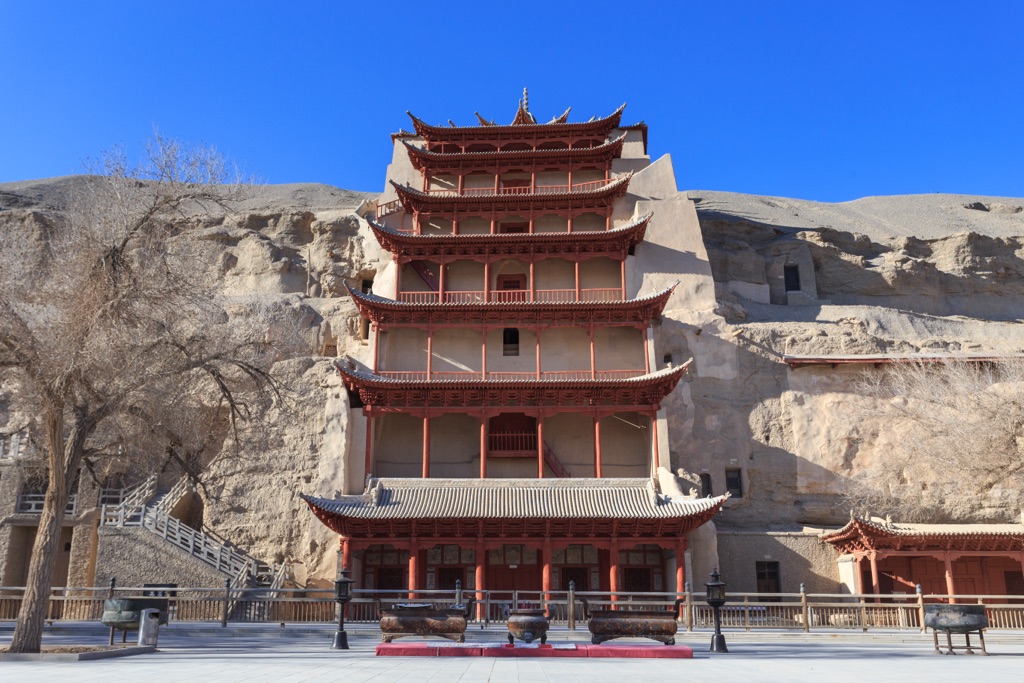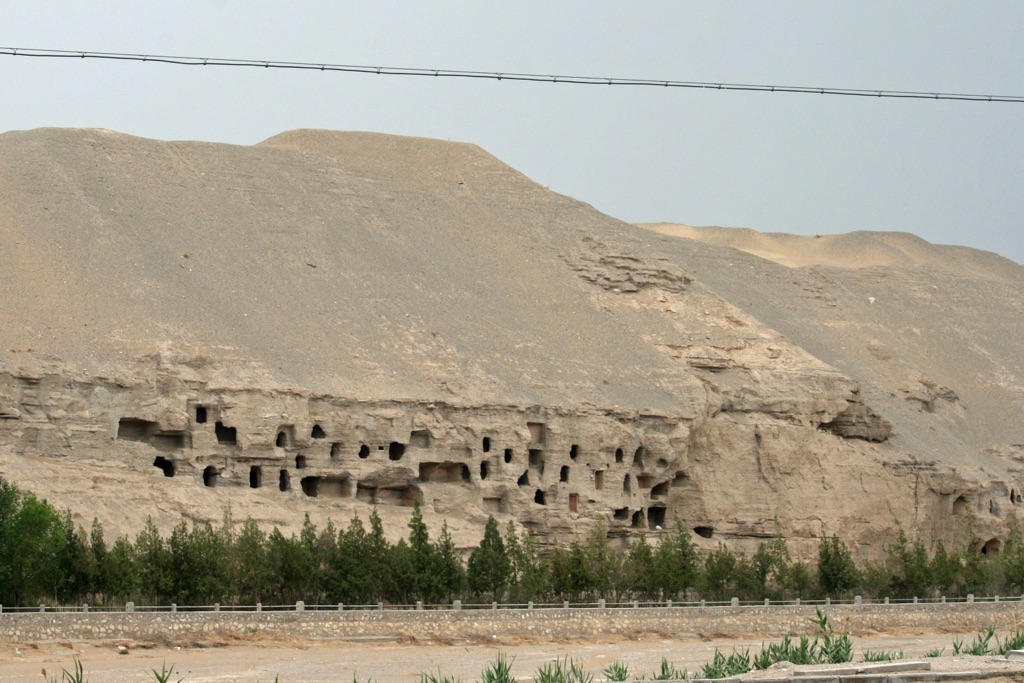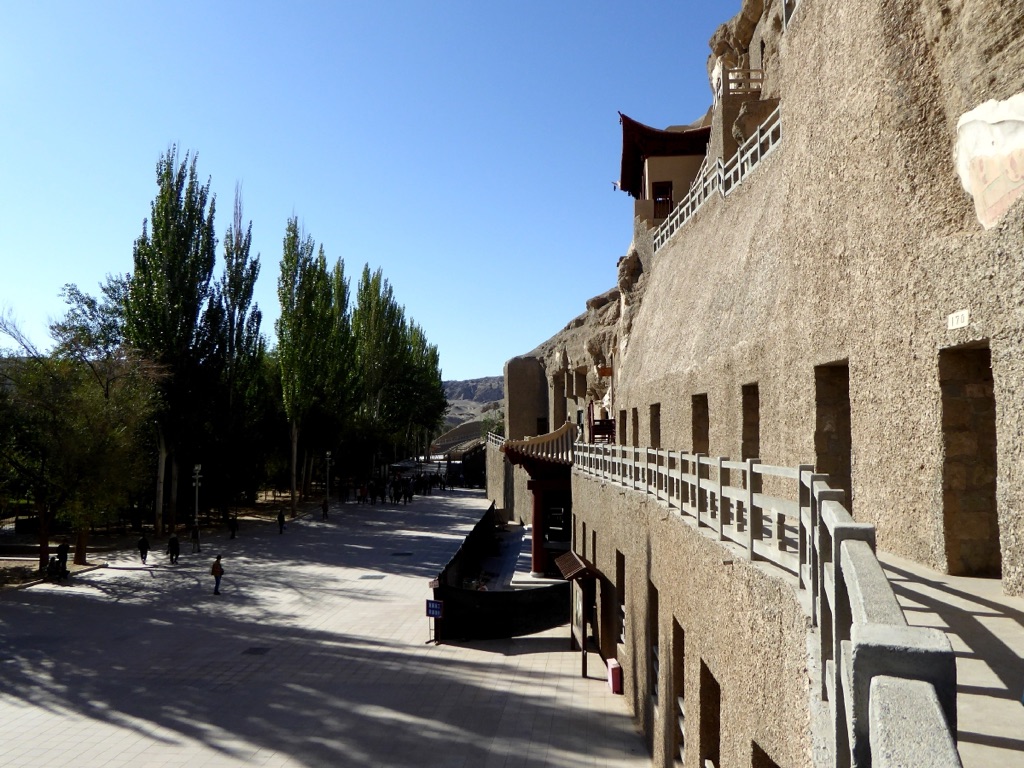The Mogao Caves, also known as the Thousand Buddha Grottoes, are a network of Buddhist temple grottoes located near the city of Dunhuang in the Gansu province of China. They are famous for their statues and wall paintings spanning 1,000 years of Buddhist art. Carved into the cliffs above the Dachuan River, the caves serve as a testament to the religious, cultural, and artistic exchanges along the Silk Road. The site is a UNESCO World Heritage Site, recognized for its historical and cultural significance.
Get your dose of History via Email
Historical Background of Mogao Caves
The Mogao Caves were carved out as a place of worship and meditation. They were first constructed in 366 AD by a Buddhist monk named Le Zun. Over the centuries, the site expanded with patronage from monks, pilgrims, and local rulers. The caves became a repository of art, manuscripts, and relics. They were a bustling center of culture and religion during the Tang Dynasty.
Discovery of the caves in modern times dates back to 1900 when a Taoist monk, Wang Yuanlu, stumbled upon sealed cave chambers. These chambers contained a treasure trove of manuscripts, known as the Dunhuang manuscripts. The caves attracted the attention of explorers and historians worldwide. Notably, Aurel Stein, a Hungarian-British archaeologist, took many manuscripts and artworks to Britain.

The creators of the Mogao Caves were skilled craftsmen who worked under the patronage of wealthy donors. These donors included emperors, high-ranking officials, and religious leaders. The caves served as a monastic complex and were inhabited by monks for centuries. They also played a role in the spread of Buddhism throughout China.
Throughout history, the Mogao Caves have witnessed significant events. They were abandoned during the Ming Dynasty due to changing trade routes and the decline of Buddhism. However, they remained a place of local pilgrimage. The caves were rediscovered and have since become an important cultural and historical site.
The Mogao Caves have undergone several conservation efforts to preserve the delicate artwork and structures. The site is now managed by the Dunhuang Academy, which oversees its preservation and research. The caves continue to be a source of fascination for historians, artists, and tourists alike.
About Mogao Caves

The Mogao Caves consist of 492 cells and cave sanctuaries. They are famous for their statues and murals that cover 45,000 square meters. The caves are carved into the side of a cliff, forming a system of shrine rooms. These rooms were used for meditation, worship, and housing for monks.
The construction of the caves was an arduous process. Workers first chiseled out the rock and then created the murals and statues. The materials used included straw, wood, and clay for the statues, and natural pigments for the paintings. The artwork depicts various aspects of Buddhist teachings, life along the Silk Road, and Chinese mythology.
Architectural highlights of the Mogao Caves include the giant statues of Buddha and the elaborate painted ceilings. The largest Buddha statue is 35 meters tall, dominating the space within its cave. The ceilings often feature intricate designs and motifs, such as the lotus flower, which is significant in Buddhism.
The caves also contain a library cave, which held thousands of manuscripts, printed documents, and textiles. These items provide insight into the lives of people during the time the caves were active. The library cave was sealed for nearly a thousand years before its discovery.

Preservation of the Mogao Caves is a complex task due to the fragile nature of the murals and statues. The dry climate has helped preserve the artwork, but human interaction and environmental factors pose ongoing threats. Conservationists work to maintain the integrity of the site while allowing for scholarly study and controlled public access.
Theories and Interpretations
Several theories exist about the use of the Mogao Caves. Most agree that they were primarily used for religious purposes. The caves served as a place for meditation, study, and the creation of art as a form of devotion. They were also a resting place for travelers along the Silk Road.
Mysteries surround the Mogao Caves, particularly regarding the sudden sealing of the library cave. Some speculate that it was to protect the manuscripts during times of instability. Others believe it was a ritual act of offering to the Buddha.
Interpretations of the artwork within the caves often require matching them to historical records. The murals and statues are a visual narrative of Buddhist teachings and stories. They also reflect the cultural exchanges between different peoples along the Silk Road.
Dating of the caves and their contents has been carried out using various methods. Radiocarbon dating, stylistic analysis, and historical texts have all contributed to understanding the timeline of the caves’ construction and use.
The Mogao Caves continue to be a subject of research and study. Scholars aim to unravel the complex history of the site. They also seek to understand the significance of the art and manuscripts within the broader context of Asian history.
At a glance
Country: China
Civilization: Various, including the Northern Wei Dynasty, Western Wei, Northern Zhou, Sui, and Tang dynasties
Age: Established in 366 AD, with activity spanning until the 14th century
Conclusion and Sources
Reputable sources used in the creation of this article include:
- Wikipedia: https://en.wikipedia.org/wiki/Mogao_Caves
- Britannica: https://www.britannica.com/place/Mogao-Caves
- UNESCO World Heritage Centre: https://whc.unesco.org/en/list/440
